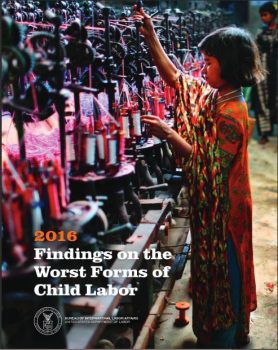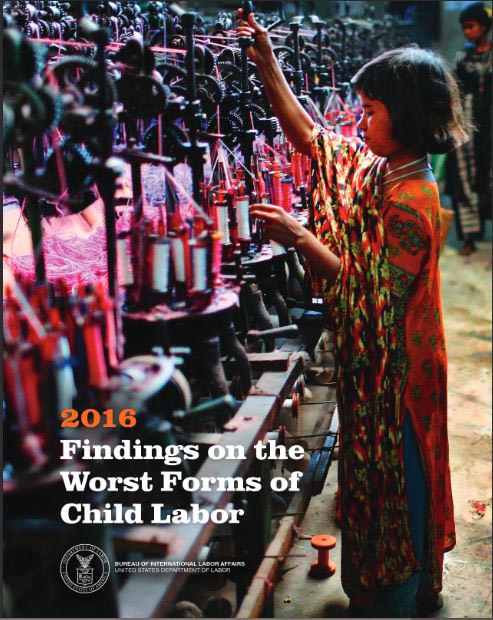Guyana made a moderate advancement last year in efforts to eliminate the worst forms of child labor, but the government lacks a comprehensive policy or targeted social programs to fully address the extent of the problem, a recent global report says.
The 2016 Findings on the Worst Form of Child Labor, produced by the United States Department of Labor’s Bureau of International Labor Affairs, notes that government reformed the Inter-Ministerial Taskforce on Combating Trafficking in Persons, began developing a National Action Plan and Policy on Child Labor last year, and finalized the 2017–2018 National Action Plan on Combating Trafficking in Persons.
“However, children in Guyana continue to engage in the worst forms of child labor, including in mining and commercial sexual exploitation, sometimes as a result of human trafficking,” it says.
Law enforcement agencies, it adds, have insufficient funding and capacity to enforce laws related to child labor, including its worst forms, and legislation does not fully protect children. “Moreover, the Government does not have a comprehensive policy to combat child labor or targeted social programs to fully address the extent of the problem,” it says.
 This recent report supports others that have previously said that child labor continues to be a problem in Guyana.
This recent report supports others that have previously said that child labor continues to be a problem in Guyana.
According to the report, which was handed over to Minister of Social Protection Amna Ally last week, the 2014 United Nation Children’s Fund (UNICEF) Multiple Indicator Cluster Survey (MICS) survey, which was reported extensively in this newspaper last year, had stated that 18% percent of Guyana’s children between the ages of 5 and 17 are engaged in child labor.
The survey had also found that 10% are involved in economic activities above the age-specific threshold, 1% performs household chores above the age-specific threshold, and 13% work under hazardous conditions. Additionally, it noted that both boys and girls are engaged in child labor, with the involvement of boys, measured at 20%, just slightly higher than the involvement of girls, which was measured at 17%.
The US report says Guyana has legislation for children but it does not fully protect adolescents ages 16 and 17 from engaging in hazardous work. It points out that adolescents ages 16 and over are allowed to perform certain work requiring continuity through the day and night, including gold mining reduction work and the production of iron, steel, glass, paper, and raw sugar, without provisions to ensure that their health safety, and morals are fully protected, or the specific instruction or training needed for such activities.
The report also says that children, including girls as young as 12, are involved in commercial sexual exploitation in Georgetown and in the interior. It adds that there have been reports of girls being subjected to commercial sexual exploitation in mining communities as a result of human trafficking.
“Guyanese law does not sufficiently prohibit all commercial sexual exploitation of children as laws related to pornography and pornographic performances do not prohibit the use, procuring, and offering of a child for each of these purposes,” it further states.
The absence of child-sensitive investigation and prosecution procedures, which puts children at risk of reprisal, is also highlighted in the report.










